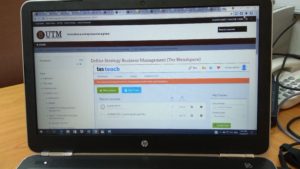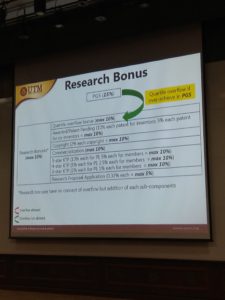Hidup umpama dam ular.
Hidup kita umpama cawan – jangan benarkan orang lain mengisi cawan kita – pastikan apa yang mengisi cawan kita.
Kurangkan 4 benda putih – nasi, gula, tepung, susu
Setiap kali melihat ujian orang lain – sentiasa berdoa semoga kita dijauhkan daripada dugaan sedemikian
rumah dia besar, rumah aku? Kereta dia besar, kereta aku? Bini dia besar, bini aku?
Perempuan bukan cerewet tapi sebenarnya teliti.
Jem tahap siput pun boleh babai.
Shamsul Debat -SD (9.00 pagi, 23 Ogos, Bilik Seminar Menara Razak). Pa beliau- 018 66156619. Facebook – syamsul amri ismail official
Makanan kegemaran SD – ikan semilang dan air sirap.
Kenapa dipanggil shamsul debat – rupanya beliau memang juara debat. List pencapaian berdebat panjang berjela.

Stress –
homeostasis (proses perubahan badan untuk mengekalkan keseimbangan dalaman supaya teratur bagi proses fisiologi)
Tekanan menyebabkan homeostasis terganggu. Jika Success – homeostasis tercapai tetapi gagal jika tekanan berterusan. Kesannya terjadi masalah psikologi, emosi, fizikal, agresif, memusnahkan diri.
E.g. kes anak nakal dalam keretapi yang kematian ibu. Nabi muhammad saw marah bila Abu Bakar tidak dapat menahan sabar.
Beri nilai positif kepada setiap pancaindera fizikal:
Mata- jaga penampilan, hidung -wangi, perut – pemakanan, telinga – perkataan yang baik. Akhirnya nanti hati positif.
Tanda tekanan
- Fizikal – telinga merah, lemah tenaga, sakit rahang, sentiasa lapar, sakit tengkuk, masalah seks, insomnia, terlebih tidur.
- Mental – nangis, marah, kepala angin, mimpi ngeri, putus asa.
- Psikometrik – hipertensi, gastrik. Jantung, pelahap, hentak kaki, lupa, ponteng, lewat, menarik rambut, ketuk jari, gigit jari, nyanyuk, addicted rokok dan alkohol.
- Psikiatri- bimbang, angin, hipokondria (kebimbangan abnormal berkenaan kesihatan diri) kehidupan sosial dan emosi.

Perempuan more on otak kiri – details, now and multitasking. Clerks, PA, nurse suitable for ladies.
Lelaki more on otak kanan – overview, one task at one time.S
Sebab stress:
- Penyesuaian – tidak serasi, berselisih pendapat
- Kekecewaan -gagal ujian, bercinta
- Bebanan –
- Pengurangan
- Tandanervous:
1. Tangan berpeluh
2. Kerdipan mata laju – according to degupan jantung
3. Menguap – serius?
Cara mengatasi stress
- Rancang masa – especially waktu peribadi
- Bersenamsecara konsisten
- Teknik tenang diri – relaks, senamrobik
- Kurangkan makan lemak
- Belajar let go
- Cari diri sendiri dan bernafas
- Regangkan badan
- Manjakan diri
- Makanan berkhasiat
- Tambah aktiviti keluarg
- Wujudkan kumpulan sosial
- Kurangkan4 benda putih – nasi, gula, tepung, susu
- Ingat mati kerana Allah
- Elak tangguh kerja
- Berdoa
- Tingkat pengurusan masa
- Baiki dan ubah persekitaran
- Tidur yang cukup
- Ceria
- Sentiasa bersyukur – always look at the brighter side




